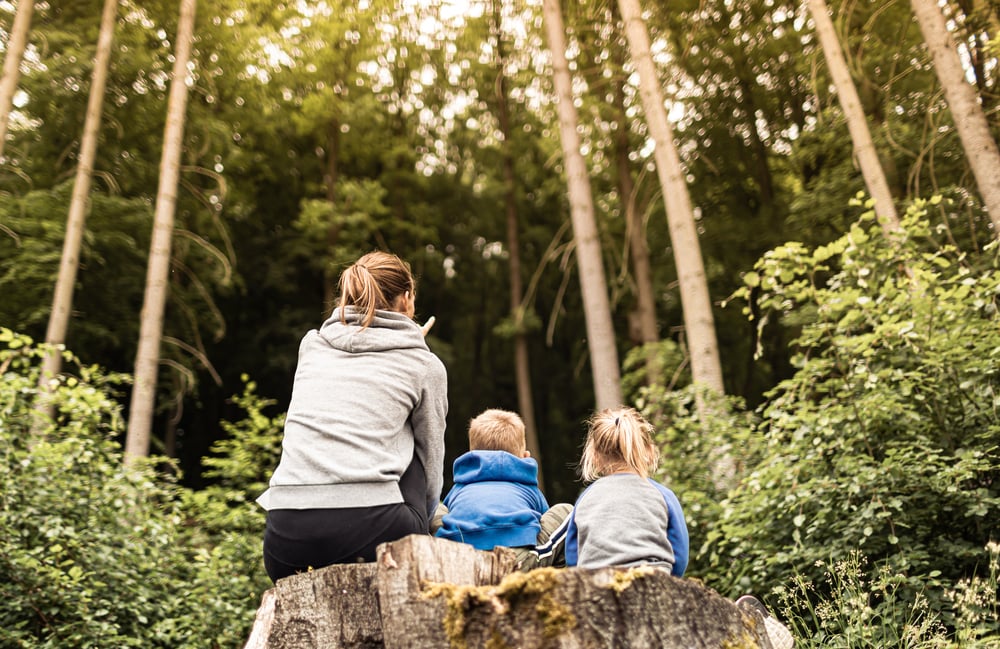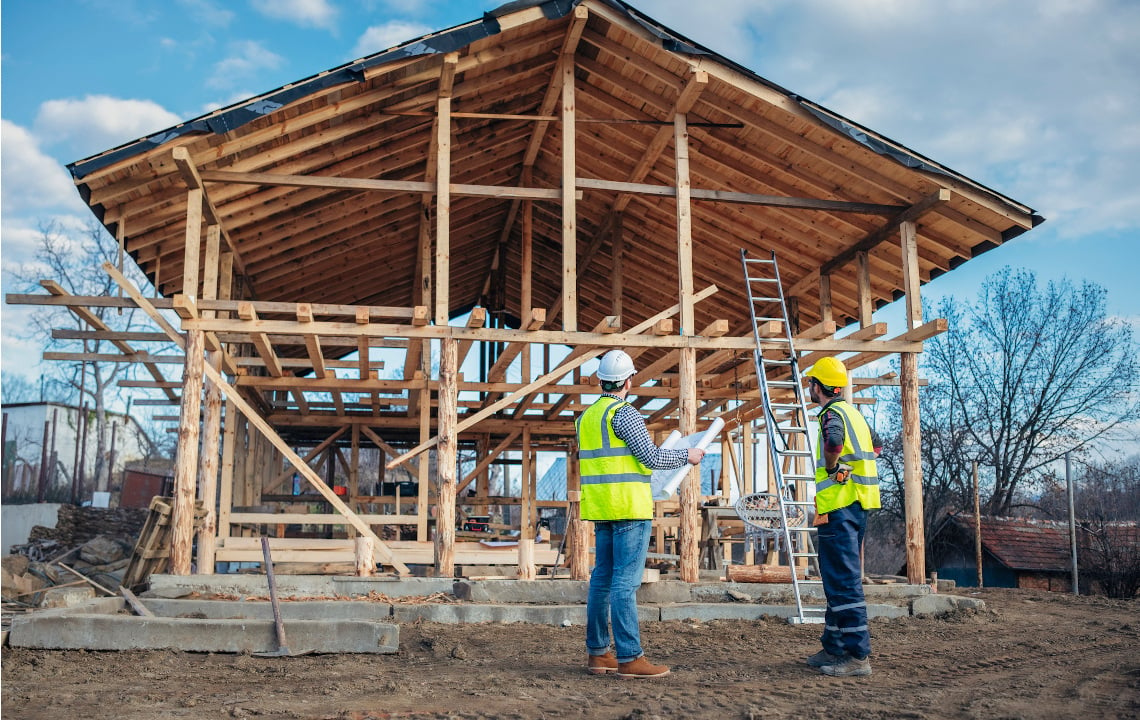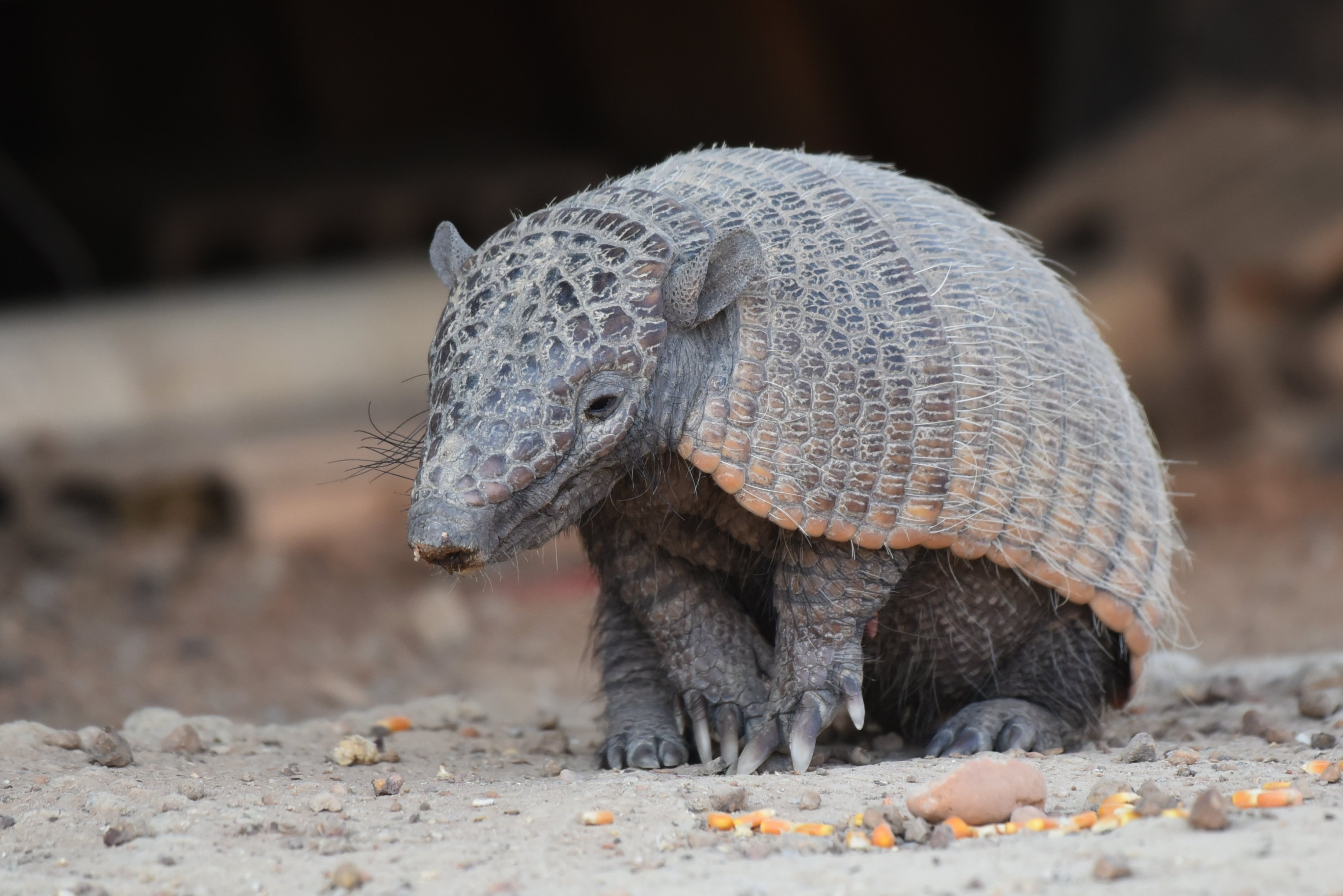A powerful connection with nature created during childhood can have lasting impacts. Learn how to start birdwatching with your kids (or any kids in your life) to strengthen your relationship with them and help them cultivate an appreciation for the natural world.
Today's kids get up to 44 hours of screen time per week and less than 10 minutes per day playing outside, so it's more important than ever that adults encourage them to get fresh air and sunshine.
We're learning more every day about the health benefits of spending time in nature, including reduced rates of stress, anxiety and depression.
Outside time improves kids' overall health as well as cognitive function. Spending time in nature can even help kids manage ADHD symptoms and behaviors.
Most kids have an affinity for nature, but it can still be challenging to interest them in the outdoors. Environmental educators say wildlife watching is great for kids because of the excitement of seeing animals in their natural habitats.
Narrowing wildlife watching down to birdwatching will help you avoid overwhelm by focusing your attention. And birds are exciting for kids with their colorful feathers and distinct songs. You'll find birds almost anywhere you can get outside, whether in a city park or a nearby creek.
To bring you the best tips for engaging kids in birdwatching, we reached out to the Cornell Lab of Ornithology. They let us preview their new course: "Let's Go Outside! How to Connect Kids with Birds and Nature,” created by environmental educators and birders.
Help your kids take a break from screens and get outside and in touch with their senses and surroundings with these tips.
Planning an adventure
The fun of outdoor adventures starts with the dreaming and planning of it all—the anticipation of a new experience.
First, decide where and when you want to go birding. This can be a park you frequently visit or some place completely new.
Birders recommend areas with water for easy access to diverse bird species. In rural areas, look for wetland areas, lakes and streams. In cities, look for parks with fountains or ponds.
And mornings and evenings are good times to go. Increased wildlife activity is more likely early and late in the day.
Include your child in the planning stage to help build their enthusiasm. Look at a map of the area together before you go, and ask them if there are specific spots they'd like to check out.
Plan birding-specific activities for you and your child to focus on. The "Let's Go Outside!" course provides a list of birding and nature activities for kids of all ages to try.
"With the activities, there's a whole lot of observation you can do that won't feel school-like," says Mya Thompson, Ph.D., Cornell Lab's Co-Director for Engagement in Science and Nature. "Even just doing a sit spot— sitting quietly for 15 minutes and listening and watching and letting things stabilize after you've moved through an area is so powerful. You can also do a sound map by closing your eyes and identifying the sounds around you, tuning into the moment."
Be sure to research the birds most likely to visit your nature spot. You can use the Merlin Bird ID app for this. Select a specific location, date and time, and the app will generate a list of birds frequently sighted in that area.
Try a scavenger hunt or quest based on this bird list. You and your child can draw the birds on a sheet of paper beforehand and then check them off when you see or hear them on your outing.
For younger kids, try a more general scavenger hunt. You might have them look for brown birds or small birds, for example.
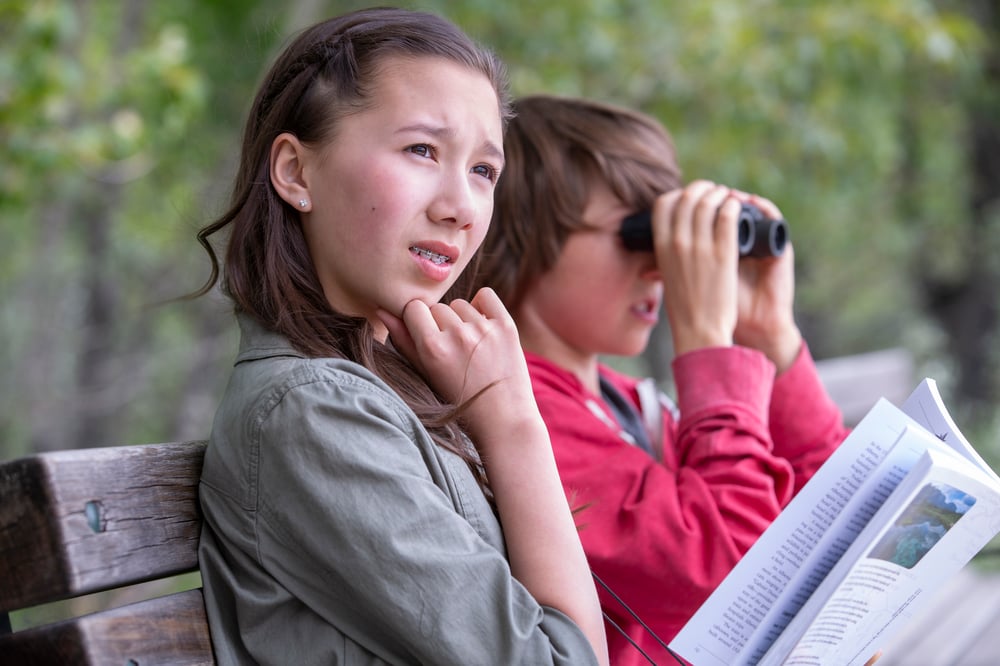
Guidebooks & Gear
Another way to help kids build excitement is by packing a backpack full of their favorite gear and supplies.
Consider borrowing or buying a field guide to learn about different bird species. Going to a library or bookstore to browse is a fun activity in itself and great for a rainy day! Let your child lead and see what appeals to them.
From the course: "Some field guides use photos and others use illustrations. Some people like the realism of a photo, others prefer an artist’s illustration that can more effectively highlight features to focus on. It all comes down to preference!"
Match the guide to your geographic region and choose one that fits in a pack if you plan to take it with you.
The course creators recommend: "The Young Birder's Guide to Birds of North America" by Bill Thompson III.
"There are many great choices out there, but unlike some books aimed at kids, this is a true field guide that has the images and range maps needed to identify birds," say the course creators. "It’s also portable and contains about 300 of the most common birds. Each species has useful 'find it' tips, a 'wow' fact, and image captions with cool information about behaviors. And the introduction has useful sections, such as birding manners, and field skills."
You might also consider binoculars, keeping these tips from the course in mind:
- Lower magnification might be best for beginners — try a range of 6 to 8.
- Smaller lenses are lighter (and easier for kids to carry) and less expensive — try lens sizes between 25 and 40.
(When shopping for binoculars, look at the specs. You'll see two numbers listed, like this: 8x42 or 10x25. The first number listed is the magnification. The second number is the lens diameter.)
Finally, the course creators suggest buying the best quality binoculars that you can afford. Avoid inexpensive models geared towards kids, as they are likely to break, which can be discouraging.
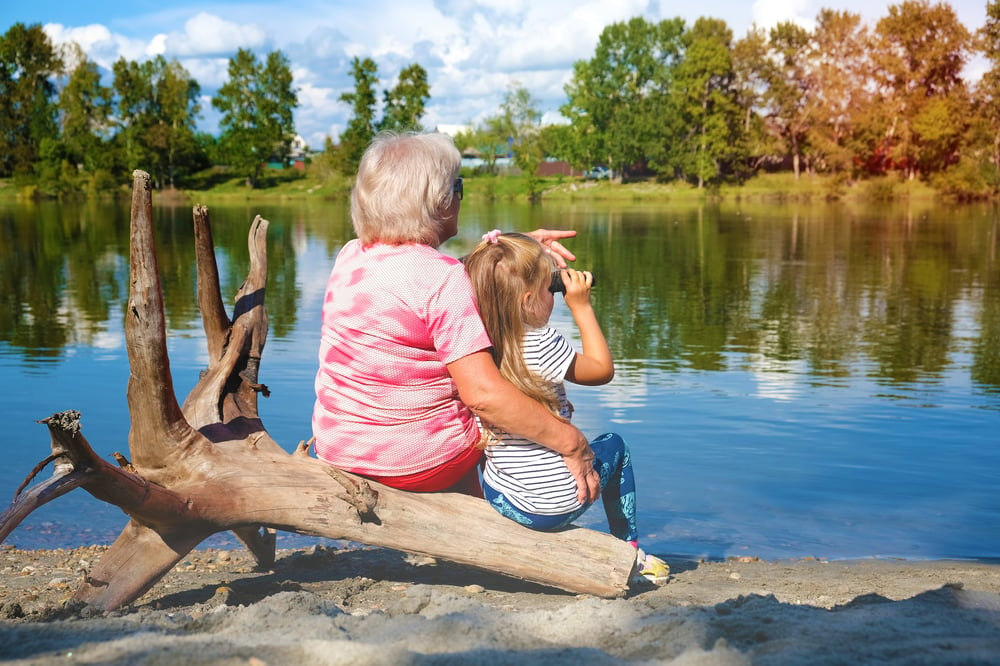
Mindset: Access Your Inner Child
So you've planned an outdoor birding adventure — you know where you're going, what birds to look for and what activities you plan to do with your kid.
Are you ready for their questions? As a parent or caregiver, you've probably experienced this a lot. You and your child will stumble upon things you haven't anticipated, and that's when the questions will start.
How you handle a kid's questions in nature can make a huge difference in their enjoyment level—and yours.
"One of the main inspirations is to develop curiosity as an adult and let that be the guiding principle for the kids, inspiring them to do the same," says Mya Thompson. "Kids, at a certain age, they're all about 'why?' And it's important to not feel bad if you can't answer all of the questions. Look at it as a mutual curiosity, a joint exploration."
The "Let's Go Outside!" instructors say that if you offer a factoid in response to a child's question, it tends to shut down the conversation and their curiosity. If you encourage curiosity, your kid is much more likely to engage with the environment and develop deeper thinking. They're also more likely to excel in science courses later on.
From the course: "Scientists from California State University asked whether parents who intentionally supported curiosity had a positive effect on their kids’ later skill and interest in science. Eight-year-olds whose parents exposed them to new experiences and encouraged them to ask questions were more likely to do well in high school science as well as report interest in science as a career. Your early investment in creating a sense of wonder and a climate of discovery in your kids’ lives can really make a difference!"
So if you shouldn't offer facts in response to kids' questions, what should you do instead?
"Being curious is all about being open-minded and getting in touch with a part of human nature that as adults we often repress. It’s about remembering that sense of wonder that drew us to the natural world in the first place," says Nicole Jackson, Environmental Education Expert at Cornell Lab's Bird Academy. "When I’m curious about something, I want to gather information about it. I want to read about it, observe it, and talk to others about it. I’m not looking for answers, but experiences. And that’s what we hope you will gain when engaging your kid in nature."
The key is to ask open-ended questions that stimulate thought, conversation and more observation. So when your kid starts asking questions, respond with things like:
- What do you think?
- How could we find out?
- What clues could we gather to learn more?
- What made you notice that?
Think Like a Scientist
Another thing kids often do is make confident declarations about things they see out in nature. An example from the "Let's Go Outside!" course: a child sees two squirrels nose-to-nose and says, "Those squirrels are kissing!"
It can be tempting to either correct the child or go along with it — after all, they're showing enthusiasm. But this can also be an opportunity to teach your child how to think like a scientist and make observations instead of inferences. This will create a closer connection with nature and a deeper understanding of its mechanisms.
Observations open the senses and help us absorb information about the world around us. Inferences (like the child's declaration that the squirrels were "kissing") can shut down thinking and lead to conclusions that aren't based in reality. The key is to make as many observations as possible and let that drive the exploration.
Observations are the things you directly experience with your senses, like what you can see or hear. Hearing is a great example with birds, because you and your kid can listen for birds even if you can't see them.
What you should do is ask your kid to make more observations. You don't need to discourage inferences--maybe just ask them, "What else might be going on?" And keep making additional inferences.
"You’re also likely to start spontaneously wondering which new observations could help you figure out which explanations are more likely," say the course creators. "Sound familiar? Yep, it’s what scientists and naturalists do for a living. As an adult mentoring a child, helping them tune in on when they are observing something versus interpreting it with inferences can help them hone their thinking as a scientist and naturalist. Overall, they will become a more keen observer of what is actually happening."
Open-ended questions and keen observations inspire more exploration, adventure and enjoyment in any outdoor activity you and your child might choose.
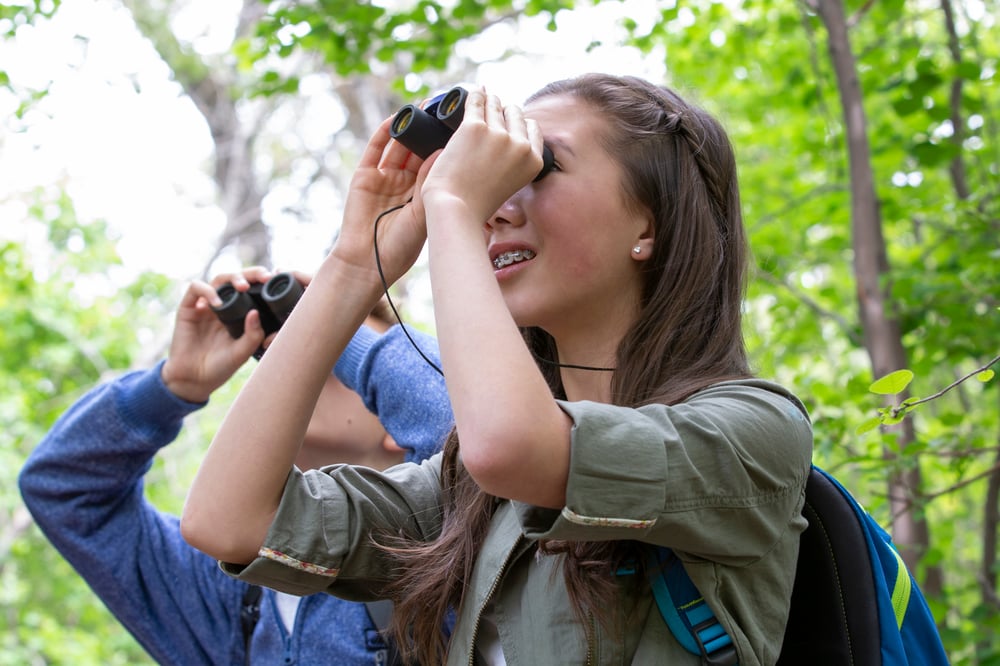
Notice What Worked and Plan the Next Trip
What will you do when something doesn't go as planned? Maybe your child jumped in the creek and got cold, wet feet, leading to an early departure. That's OK! Next time, you'll pack extra socks.
What else can you learn for next time? If you and your child came up with questions, try writing them down and spending a rainy day researching the answers.
If birdwatching is capturing your attention, you might install feeders at home or get involved in citizen-science projects, where you can submit observations about species that you see to help scientists with their research.
It's ultimately about exploration and staying open and curious about what comes next.
We'll leave you with these words of advice from course creator Mya Thompson:
"It can be hard for parents who are juggling a lot, but this isn't about taking kids on a week-long trip to a national park. Everybody can do this. Parents, you already have everything you need. You don't need to study at all. It's just about making the time to go out and be present for your kids and explore together. You can do that in so many ways, and you probably have everything you need at your fingertips."



